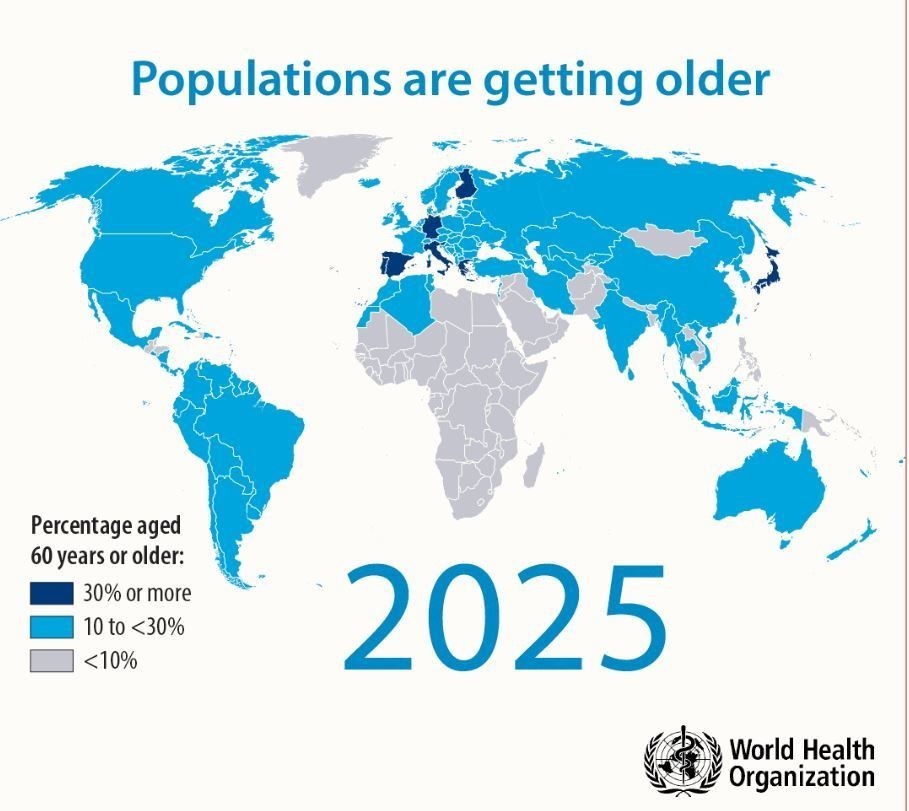How Does Architecture Respond To The Needs Of Aging Populations?

The world is rapidly aging. With advancements in healthcare and better living standards, people are now living longer than ever before. This has led to an increasing number of elderly people, and cities need to adapt to meet their needs. In this post, we will explore how cities can adapt to the needs of their aging populations.
Increased Accessibility
One of the biggest challenges for elderly people is mobility. As people age, they may struggle to walk long distances or climb stairs. Therefore, cities need to become more accessible by providing facilities such as wheelchair ramps, elevators, and handrails in public places. Some cities have even introduced specialized transport services for the elderly.
More Healthcare Facilities
Older people often have a higher incidence of medical conditions than younger people. Therefore, cities must ensure that healthcare facilities are easily accessible to the elderly. This includes hospitals, clinics, and pharmacies. In addition, healthcare professionals such as doctors and nurses need to be trained in geriatric care to ensure that they can meet the unique healthcare needs of older people.
Age-Friendly Housing
As people age, they may struggle with everyday tasks such as cooking, cleaning, and maintaining a home. Cities need to encourage the construction of age-friendly housing that provides facilities such as handrails, non-slip flooring, and easy-to-access kitchens and bathrooms. This will enable older people to live independently for a longer period of time.
Community Services
Older people often suffer from loneliness and social isolation. Therefore, cities need to provide community services that cater to their needs. This includes community centers, senior centers, and social clubs. These services can provide opportunities for elderly people to engage in social activities, volunteer work, and education programs, which can help to reduce loneliness and improve mental health.
Technology
Technology has the potential to revolutionize the way that cities cater to their aging populations. From healthcare apps and telemedicine services that enable remote consultations with medical professionals, to smart homes that can automatically adjust lighting and temperature based on the needs of the occupant, technology can help older people to live independently for longer.
Transportation
Many elderly people may struggle with driving or walking long distances. Therefore, cities need to provide accessible and affordable transportation options for older people. This includes specialized transport services for elderly people who may struggle with mobility, as well as subsidized public transport options for those on a fixed income.
Education and Training
City officials, healthcare professionals, and community leaders need to be educated and trained on how to meet the unique needs of aging populations. This includes training on geriatric care, dementia care, and end-of-life care. In addition, educational programs that cater to the interests and needs of older people can help to reduce loneliness and improve mental health.
Partnerships
Cities need to partner with community organizations, non-profits, and healthcare providers to ensure that the needs of their aging populations are met. Collaboration can help to identify gaps in services and develop solutions that are tailored to the needs of local communities. By working together, cities can create a more age-friendly environment for their residents.
FAQ
What is an aging population?
An aging population is one in which the proportion of elderly people is increasing. This occurs as a result of declining birth rates and increasing life expectancy. It presents a unique set of challenges for cities, as they must adapt to cater to the needs of an older population.
Why is it important for cities to adapt to the needs of aging populations?
Adapting to the needs of aging populations is important for several reasons. Firstly, it enables older people to live independently for longer, which can improve their quality of life. Secondly, it helps to reduce the burden on healthcare services by providing preventative care and facilities that promote healthy aging. Finally, it helps to promote social cohesion by ensuring that older people remain engaged in their communities.
What are some examples of age-friendly cities?
Age-friendly cities are those that cater to the needs of their aging populations. Examples include Singapore, which has introduced transport services, healthcare facilities, and community services that are specifically tailored to older people. Other examples include Barcelona, which has introduced age-friendly housing and public spaces that are accessible to people of all ages.
In conclusion, cities must adapt to the needs of their aging populations by providing increased accessibility, healthcare facilities, age-friendly housing, community services, technology, transportation, education and training, and partnerships. By doing so, they can promote healthy aging and improve the quality of life of their residents.

![Aging Populations Around The World [Infographic] - Aperion Care](https://aperioncare.com/wp-content/uploads/2017/04/aging-populations-768x5886.jpg)


Post a Comment for "How Does Architecture Respond To The Needs Of Aging Populations?"